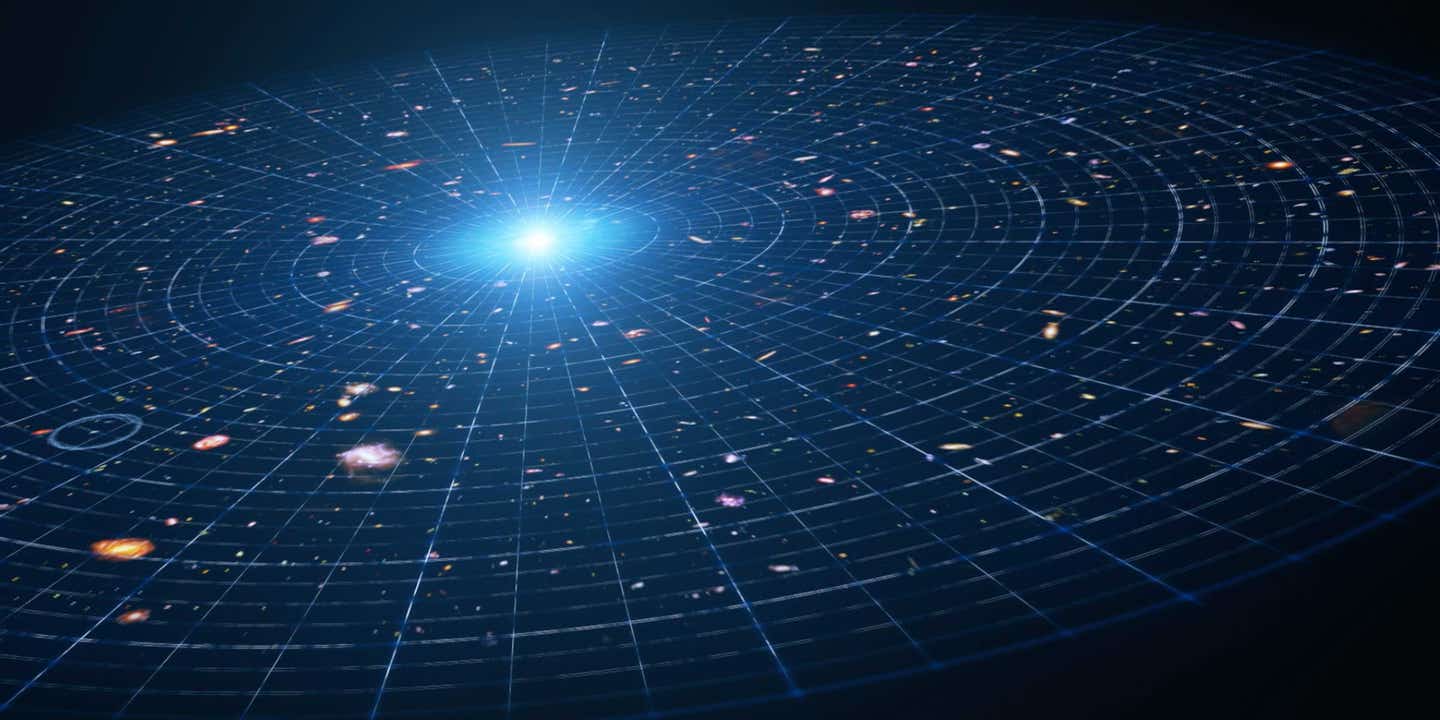From Big Bang to Long Freeze: Scientist propose surprising end to the universe
New research into holographic dark energy suggests a grim future for the universe, known as ‘The Long Freeze,’ where cosmic expansion halts.”

A new theory proposes that the universe might be heading toward a “long freeze”. (CREDIT: CC BY-SA 3.0)
Scientists studying dark energy, the mysterious force accelerating the expansion of the universe, are uncovering startling possibilities about its long-term consequences. A new theory proposes that the universe might be heading toward a "long freeze," a scenario where cosmic activity grinds to a near halt as the universe reaches a final, finite size.
This scenario is the result of a hypothesis called holographic dark energy, a radical idea that suggests gravity, and perhaps space itself, is an illusion.
According to this theory, our three-dimensional universe may actually be a projection of quantum forces acting on a two-dimensional surface. In this model, the phenomenon we perceive as gravity, along with the overall structure of space, emerges from this quantum activity.
Dark energy was first discovered in the 1990s, and since then, it has captivated scientists with its mysterious nature. It makes up about 70% of the energy density in the universe, dominating over regular and dark matter. Despite decades of research, dark energy remains one of the central puzzles of modern cosmology. Various theories, including holographic dark energy, have been proposed to explain its role in the universe’s expansion.
Holographic dark energy naturally explains the universe’s accelerating expansion. However, astrophysicists have recently begun exploring what this model could mean for the future of the universe. Their findings, published to the preprint server arXiv, focus on the long-term evolution of the cosmos under the influence of this hypothetical form of dark energy.
As the universe continues to expand, the density of both regular and dark matter decreases. The research team, rather than accounting for these forms of matter, focused purely on how holographic dark energy might shape the cosmos’ future. They found that while the universe’s expansion would continue, the rate of this expansion would eventually slow down. Over time, the expansion would peter out until the universe reached a nearly static state, locked at a final size.
Related Stories
This process has been dubbed the "long freeze." As dark energy's influence weakens and the universe's expansion rate slows, the cosmos will grind to a halt. Unlike other potential fates of the universe, such as the "Big Freeze," where expansion continues indefinitely, or the "Big Crunch," where the universe collapses back in on itself, the long freeze would see the universe's growth stop altogether. However, the consequences of this scenario are far from hopeful.
As the expansion slows, all the stars in the universe will burn out, and no new sources of energy will form. Eventually, subatomic particles will drift apart in the cold void of space. This slow-motion apocalypse presents a stark contrast to the more dramatic endings often considered for the universe. In the long freeze, everything simply fades away, locked in a frozen, empty state.
Even within this exotic theory of holographic dark energy, cosmologists have yet to find a way to provide the universe with a more optimistic conclusion. The long freeze paints a bleak picture for the ultimate fate of the cosmos, with no cosmic event to reverse the cold, inevitable decay that awaits.
The discovery of the universe’s late-time acceleration in the 1990s marked a critical point in our understanding of cosmology. For decades, scientists have tried to unravel the mystery of what drives this acceleration, with holographic dark energy being one of the more recent proposals. It fits within a broader landscape of theories, including the cosmological constant, modified gravity models, and scalar fields that might drive cosmic acceleration.
Among these theories, holographic dark energy stands out for its connection to quantum gravity and the idea that our universe might be a projection of something deeper, more fundamental. The research into this theory not only attempts to solve the puzzle of dark energy but also confronts another ongoing issue in cosmology—discrepancies in our measurements of the universe’s expansion, particularly the Hubble tension.
The Hubble tension refers to the persistent differences between measurements of the universe's expansion rate based on different methods. This discrepancy hints at gaps in our current understanding of cosmology, and some researchers believe that solutions to the tension might lie in new gravitational physics or quantum theories.
In studying holographic dark energy, the researchers built on these ideas, exploring various models that could explain the universe’s expansion and eventual fate. One key factor in their model is an arbitrary parameter that adjusts the energy density of dark energy, allowing for different outcomes in the universe’s future. In the "long freeze" scenario, this parameter leads to the eventual halt in cosmic expansion.
While this theory is still untested and requires more rigorous examination, it presents an intriguing possibility for the future of our universe. It highlights how far we still have to go in understanding dark energy and the ultimate fate of the cosmos.
For now, the long freeze remains a theoretical endpoint, one of many possible scenarios for the universe's future. But with each new discovery, we come closer to unraveling the mysteries of dark energy, gravity, and the very fabric of space itself.
Note: Materials provided above by The Brighter Side of News. Content may be edited for style and length.
Like these kind of feel good stories? Get The Brighter Side of News' newsletter.
Joshua Shavit
Science & Technology Writer | AI and Robotics Reporter
Joshua Shavit is a Los Angeles-based science and technology writer with a passion for exploring the breakthroughs shaping the future. As a contributor to The Brighter Side of News, he focuses on positive and transformative advancements in AI, technology, physics, engineering, robotics and space science. Joshua is currently working towards a Bachelor of Science in Business Administration at the University of California, Berkeley. He combines his academic background with a talent for storytelling, making complex scientific discoveries engaging and accessible. His work highlights the innovators behind the ideas, bringing readers closer to the people driving progress.



